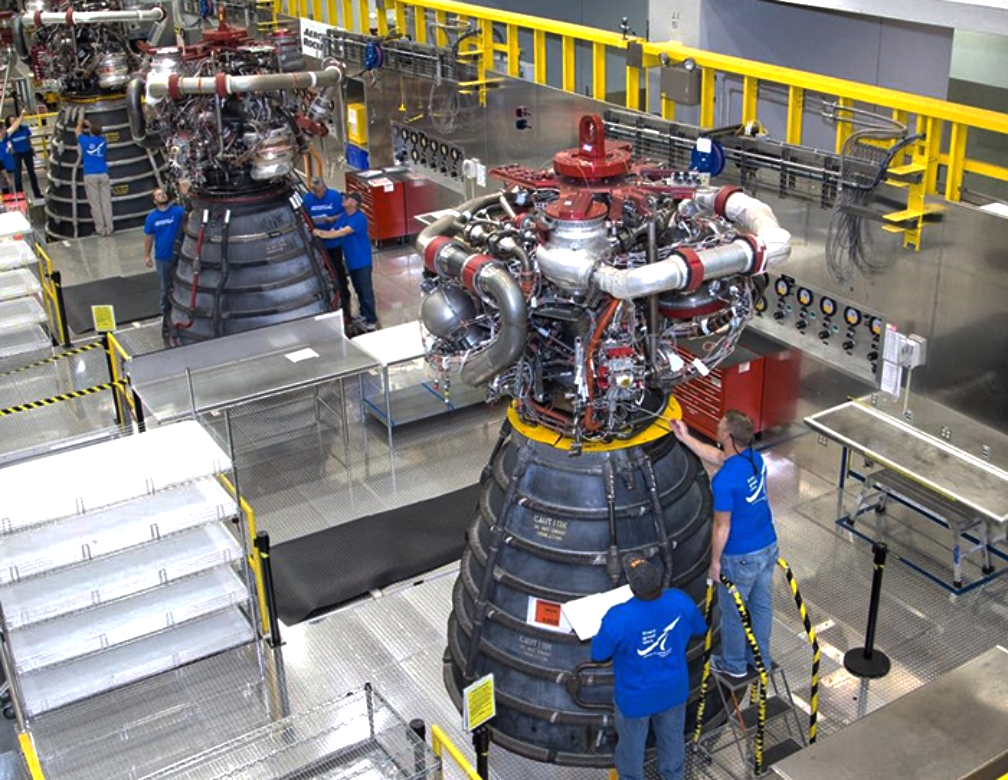
The Aerojet Rocketdyne RS-25 engine test at NASA’s Stennis Space Center completed the Retrofit-2 test series, which validated modernized, lower-cost components for new RS-25 engines to be used on the Space Launch System (SLS) heavy-lift rocket.

RS-25 development test engine No. 0528 completed a full duration firing of 500 seconds and reached 109% of its originally designed Space Shuttle Main Engine power rating during the seventh and final Retrofit-2 test series. The first test in this series took place Jan. 28; each test in the series has lasted between 500 and 650 seconds, which matches or exceeds the engine’s thrust profile during an actual launch.
The SLS core stage is powered by four RS-25 engines generating a combined two million pounds of thrust. The vehicle’s first four missions will use updated versions of engines remaining from NASA’s Space Shuttle program. Aerojet Rocketdyne is currently under contract to deliver 24 newly manufactured versions of the engines.
The components validated in the Retrofit-2 series include a main combustion chamber assembled using a high-tech metal bonding technique called Hot Isostatic Pressing (HIP); an additively manufactured Pogo Accumulator Assembly; a pair of high-pressure fuel and oxidizer turbopumps built from simplified designs using modern techniques; as well as 3D-printed valves and redesigned actuators.
The components from this test will contribute to an expected 30% reduction in the cost of the RS-25 engine compared to the versions manufactured during the Space Shuttle program. An additional development engine, No. 0525, will further validate design, materials and manufacturing technology advances in a Retrofit-3 test series starting later this year.

“The components demonstrated in the Retrofit-2 test series leverage the latest advances in design, materials and manufacturing technology to significantly reduce the cost of the RS-25 engines we are building today,” said Aerojet Rocketdyne CEO and President, Eileen P. Drake. “Our new RS-25 engines will begin flying on the fifth flight of the SLS rocket and will incorporate the newly designed components we validated during this important series of tests.”
